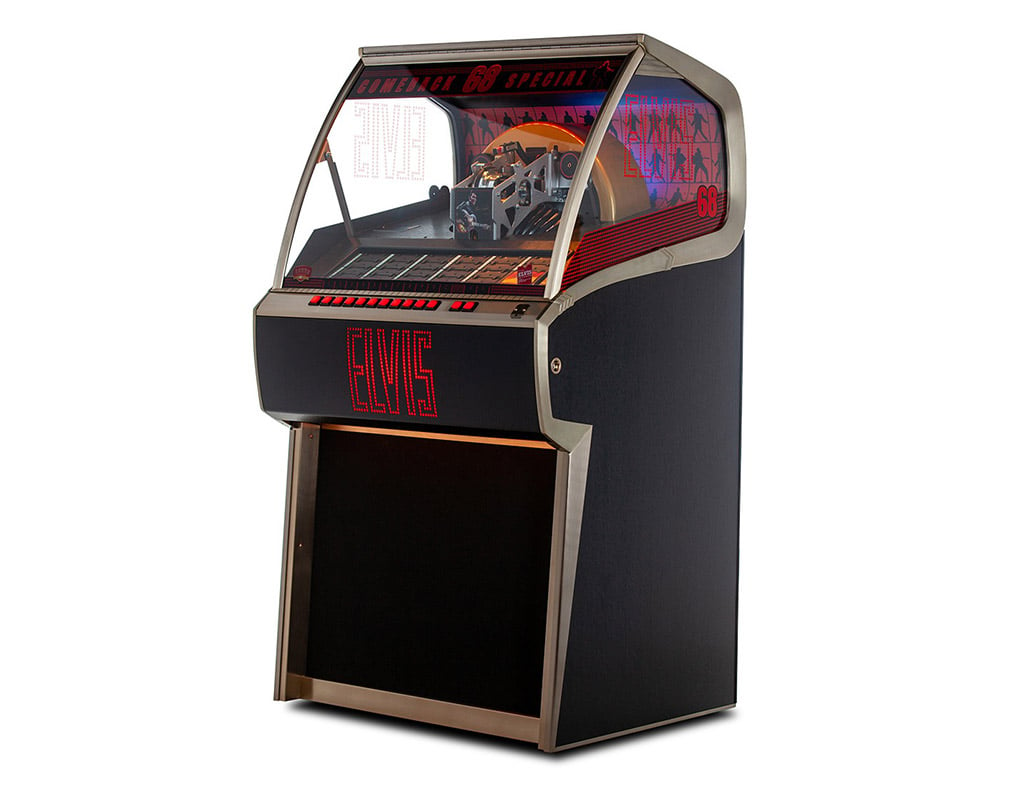Jukeboxes, whether vintage or modern, are captivating pieces of musical history and entertainment. They bring nostalgia, ambiance, and joy to homes, businesses, or arcades. However, owning a jukebox comes with maintenance responsibilities that can significantly impact your experience and long-term costs. Understanding these requirements is crucial when choosing a jukebox to ensure it aligns with your technical skills, budget, and intended use. This article explores the maintenance needs of jukeboxes—both vintage and modern—and how these considerations should guide your purchasing decision.
Understanding Jukebox Types and Their Maintenance Needs
Jukeboxes vary widely in design, technology, and functionality, which directly affects their maintenance requirements. The two primary categories are vintage jukeboxes (typically from the 1930s to 1980s) and modern jukeboxes (digital or hybrid models from the 1990s onward). Each type has unique maintenance demands.
Vintage Jukeboxes
Vintage jukeboxes, such as those from brands like Wurlitzer, Seeburg, or Rock-Ola, operate using electromechanical components, vinyl records (45s or 78s), and vacuum tubes or early transistors. Their charm lies in their analog sound and retro aesthetics, but they require significant upkeep due to aging parts and complex mechanisms.
Maintenance Requirements for Vintage Jukeboxes
- Record Maintenance:
- Cleaning: Vinyl records must be cleaned regularly to prevent dust buildup, which can cause skips or degrade sound quality. Use a soft brush or specialized record-cleaning solution.
- Storage: Records should be stored vertically in a climate-controlled environment to avoid warping due to heat or humidity.
- Replacement: Worn or damaged records need periodic replacement, which can be costly or difficult for rare titles.
- Mechanical Components:
- Lubrication: Moving parts like the record changer, tonearm, and selector mechanism require periodic lubrication with specific oils or greases to prevent wear and ensure smooth operation.
- Calibration: The tonearm and cartridge must be calibrated for proper tracking force and alignment to avoid damaging records.
- Wear and Tear: Gears, belts, and springs may wear out over time and require replacement. Sourcing authentic parts for older models can be challenging.
- Electrical Systems:
- Vacuum Tubes: Many vintage jukeboxes use vacuum tubes, which degrade over time and need replacement. Tubes are expensive and require technical expertise to install correctly.
- Wiring: Aging wiring can become brittle, leading to shorts or malfunctions. Rewiring may be necessary, which is labor-intensive.
- Capacitors and Resistors: These components often fail due to age and must be replaced to maintain sound quality and functionality.
- Cosmetic Maintenance:
- Cabinet Care: Wooden or chrome cabinets require polishing and occasional refinishing to maintain their appearance. Exposure to sunlight or moisture can cause fading or rust.
- Lighting: Incandescent bulbs or neon lights need regular replacement. Matching original bulb types can be difficult for authenticity.
- Glass and Plastics: Domed glass or plastic panels may crack or yellow, requiring restoration or custom replacements.
- Troubleshooting and Repairs:
- Vintage jukeboxes often require specialized knowledge to diagnose issues like motor failures, selector malfunctions, or amplifier problems. Professional technicians are often needed, and their services can be costly, especially in areas with few specialists.
- Regular tune-ups (every 6–12 months) are recommended to prevent major breakdowns.
Challenges of Vintage Jukebox Maintenance
- Part Availability: Many components are no longer manufactured, forcing owners to rely on salvaged parts, reproductions, or custom fabrication.
- Technical Expertise: Maintenance often requires familiarity with analog electronics and mechanical systems, which may be beyond the average owner’s skill set.
- Time Commitment: Restoring and maintaining a vintage jukebox can be a time-intensive hobby, appealing to enthusiasts but daunting for casual owners.
- Cost: Repairs, parts, and professional services can add up quickly, often exceeding the initial purchase price over time.
Modern Jukebox
Modern jukeboxes, such as those from TouchTunes or Crosley, use digital technology, CD players, or internet streaming to deliver music. They are designed for ease of use and lower maintenance but still require care to ensure longevity.
Maintenance Requirements for Modern Jukeboxes
- Digital Systems:
- Software Updates: Internet-connected jukeboxes require regular firmware or software updates to maintain compatibility with music libraries and fix bugs. Connectivity issues may arise if servers are discontinued.
- Hard Drive/Storage: Digital storage (hard drives or SSDs) can fail over time. Backing up music files and replacing faulty drives may be necessary.
- CD Maintenance: For CD-based jukeboxes, discs must be kept clean and scratch-free. Laser lenses in CD players require periodic cleaning with specialized kits.
- Electrical Components:
- Power Supply: Modern jukeboxes use solid-state electronics, which are more reliable than vacuum tubes but still susceptible to power surges or component failure.
- Cooling Systems: Fans or vents must be kept dust-free to prevent overheating, especially in high-use environments like bars.
- Touchscreens and Interfaces:
- Cleaning: Touchscreens or buttons need regular cleaning with non-abrasive solutions to maintain responsiveness and appearance.
- Calibration: Touchscreens may require recalibration if they become unresponsive.
- Replacement: Damaged screens or buttons can be costly to replace, especially for proprietary systems.
- Cosmetic Maintenance:
- Cabinet Care: Modern cabinets, often made of composite materials or metal, are easier to clean but may scratch or dent.
- Lighting: LED lights are long-lasting but may need replacement after years of use. Compatibility with proprietary systems can complicate replacements.
- Troubleshooting and Repairs:
- Modern jukeboxes are generally user-friendly but may require manufacturer support for complex issues like motherboard failures or software glitches.
- Regular maintenance (every 12–24 months) is sufficient for most models, focusing on cleaning and software updates.
Challenges of Modern Jukebox Maintenance
- Proprietary Systems: Many modern jukeboxes use custom software or hardware, limiting repair options to manufacturer-approved technicians.
- Obsolescence: Digital jukeboxes may become outdated as music formats or streaming services evolve, rendering some features unusable.
- Subscription Costs: Internet-based models may require ongoing subscription fees for music access, adding to long-term costs.
- Lower Authenticity: For collectors, modern jukeboxes lack the historical value and analog sound of vintage models, which may influence satisfaction.
How Maintenance Requirements Inform Your Jukebox Buying Decision
When choosing a jukebox, maintenance requirements should be a primary consideration alongside aesthetics, sound quality, and budget. Below are key factors to evaluate and how they align with your needs.
1. Technical Skill and Interest
- Vintage Jukeboxes: Ideal for hobbyists or those with experience in electronics and mechanics. If you enjoy restoration projects and have the time to learn, a vintage jukebox can be rewarding. However, if you lack technical skills or prefer low-maintenance devices, the upkeep may feel overwhelming.
- Modern Jukeboxes: Better suited for those who want plug-and-play functionality with minimal technical involvement. Software updates and basic cleaning are manageable for most users, but proprietary repairs may still require professional help.
Buying Tip: Assess your comfort level with DIY repairs. If you’re not mechanically inclined, consider a modern jukebox or a fully restored vintage model with a warranty.
2. Budget for Maintenance
- Vintage Jukeboxes: Initial purchase prices range from $1,000 to $10,000+, but maintenance costs can be substantial. Expect to spend $200–$1,000 annually on parts, repairs, and professional services, especially for unrestored models. Rare parts or cosmetic restoration can drive costs higher.
- Modern Jukeboxes: Prices range from $500 to $15,000, with lower maintenance costs ($50–$200 annually for cleaning, updates, or minor repairs). However, subscription fees for music services (e.g., $10–$50/month) and potential obsolescence should be factored in.
Buying Tip: Set a long-term budget that includes maintenance. For vintage models, prioritize fully restored units to minimize immediate repair costs. For modern models, check if music access requires ongoing fees.
3. Intended Use and Environment
- Home Use: A vintage jukebox in a climate-controlled home requires less frequent maintenance than one in a high-traffic setting. Modern jukeboxes are versatile for home use due to their compact size and digital interfaces.
- Commercial Use (Bars, Arcades): High usage increases wear on both types. Vintage jukeboxes may struggle with constant operation, while modern jukeboxes are designed for durability but may incur higher subscription or repair costs.
- Environment: Humidity, temperature fluctuations, or dust can damage vintage components faster. Modern jukeboxes are more resilient but still require proper ventilation.
Buying Tip: Match the jukebox to its environment. For commercial settings, choose a modern jukebox with a service contract. For home display, a vintage model may suffice if protected from environmental stressors.
4. Availability of Parts and Support
- Vintage Jukeboxes: Research the availability of parts for specific brands and models. Wurlitzer and Seeburg have active communities and reproduction parts, while lesser-known brands may be harder to maintain. Check for local technicians or online forums (e.g., Jukebox Addicts) before buying.
- Modern Jukeboxes: Verify manufacturer support, warranty terms, and repair networks. Brands like TouchTunes offer service contracts, but smaller manufacturers may have limited support.
Buying Tip: Choose a model with a strong support ecosystem. For vintage jukeboxes, prioritize popular models with documented resources. For modern jukeboxes, opt for reputable brands with accessible customer service.
5. Aesthetic and Historical Value
- Vintage Jukeboxes: Their iconic designs (e.g., Wurlitzer 1015’s bubble tubes) and analog sound appeal to collectors and nostalgia enthusiasts. However, maintaining authenticity often requires original parts, increasing costs.
- Modern Jukeboxes: They offer sleek designs and modern features (e.g., Bluetooth, touchscreen) but lack the historical charm of vintage models. Maintenance focuses on functionality rather than preservation.
Buying Tip: Decide if you value historical authenticity or modern convenience. If aesthetics are paramount, a vintage jukebox may justify the maintenance effort. If functionality matters more, a modern model is practical.
6. Long-Term Commitment
- Vintage Jukeboxes: Ownership is a long-term commitment, akin to maintaining a classic car. They appreciate in value if well-maintained but require ongoing investment.
- Modern Jukeboxes: Easier to maintain but may depreciate or become obsolete. They’re ideal for short-term use or frequent music updates.
Buying Tip: Consider your ownership horizon. For a lifelong investment, a vintage jukebox can be a collector’s dream. For temporary entertainment, a modern jukebox is less demanding.
Practical Steps for Choosing a Jukebox
- Research Models:
- For vintage: Focus on popular models like Wurlitzer 1015, Seeburg V200, or Rock-Ola 1455. Check condition (restored vs. unrestored) and part availability.
- For modern: Explore brands like TouchTunes, Crosley, or NSM. Compare features (CD, digital, streaming) and subscription requirements.
- Inspect Before Buying:
- Vintage: Test the record changer, sound quality, and lighting. Request maintenance records or proof of restoration. Avoid units with significant rust or missing parts.
- Modern: Verify software functionality, touchscreen responsiveness, and music library access. Check for warranty or service agreements.
- Budget Wisely:
- Allocate funds for initial purchase and at least one year of maintenance. For vintage, prioritize restored units to reduce upfront repairs. For modern, factor in subscription costs.
- Find Support:
- Join online communities (e.g., Reddit’s r/jukebox or Jukebox Addicts) for vintage advice. Contact manufacturers or dealers for modern jukebox support options.
- Plan Maintenance:
- Schedule regular cleaning and inspections. For vintage, learn basic tasks (e.g., record cleaning, bulb replacement) to reduce costs. For modern, stay updated on software patches.
Conclusion
Owning a jukebox is a rewarding experience, but maintenance requirements play a critical role in your satisfaction and costs. Vintage jukeboxes demand technical expertise, time, and a passion for preservation, making them ideal for enthusiasts willing to invest in their upkeep. Modern jukeboxes offer convenience and lower maintenance but may lack the soul of their analog counterparts and face obsolescence risks. By evaluating your technical skills, budget, intended use, and support options, you can choose a jukebox that aligns with your lifestyle and keeps the music playing for years to come.
Jukebox Buyer Resources
Jukebox Auctions – Vinyl Record Jukeboxes – CD Jukeboxes – Jukebox Records

